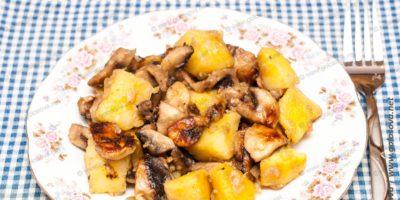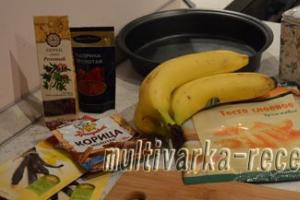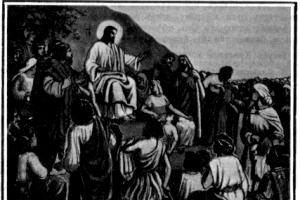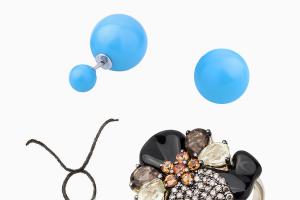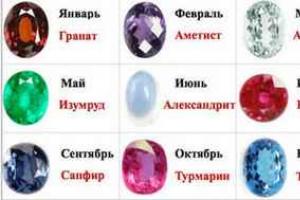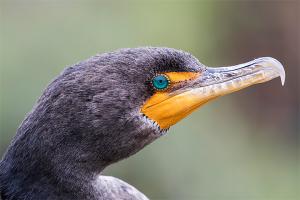A representative of one of the many species of conifers of the Pine family, the well-known spruce owes its name to the ancient Romans. This is exactly what the translation of the word “resin” sounds like. In the green kingdom, spruce occupies one of the first places and belongs to a genus in which there are almost 50 species of plants distributed throughout the world: from Northern Europe and Central Asia to North America. What kind of spruce is there, what kind of tree is it? How long does it live on Earth and what forms does it take? Let's try to find answers to these questions.
Description of spruce
Tall, straight-trunked, evergreen slender trees with a dense cone-shaped crown, narrower when young, spruce trees are covered with branches to the very base. Their trunk is difficult to see - it is hidden by the widest spruce “paws”. Young trees have smooth bark gray with a brownish tint; on old spruce trunks it is thinner and peels in places. The needles are needle-shaped and can stay on branches for up to 7-9 years, although with environmental deterioration these periods are reduced, and in an urban environment the duration of preservation of needles does not exceed 3 years. The needles are single, tetrahedral or flattened, spirally arranged on the branches. The cones are hanging, elongated, cylindrical. Ripening in the fall, they open as the seeds disperse. Seed scales of cones with wide base cover small seeds equipped with cupped wings surrounding them.
Characteristics of the plant
The description of spruce is unambiguous: it is one of the fairly unpretentious plants on Earth. It is undemanding to soil fertility and thrives on very poor soils. It is not afraid of shady slopes and slight waterlogging of soil areas. It is incredibly frost-resistant, and is not afraid of the sharply continental climate. But most species cannot withstand gas pollution and smoke; nevertheless, the tree is used in urban landscaping and is used both in single and group plantings for park alleys and snow protection strips. Dwarf or short decorative forms Perfect for decorating the landscape of small garden plots, slides and rock gardens.
Norway spruce or common spruce
The name of this tree speaks for itself and accurately indicates its habitat. European spruce grows in It is the basis that forms the taiga. In the north of Siberia and European Russia, tracts of common spruce are gradually being replaced by Siberian spruce. What kind of tree is this? There is no clear difference between these species. In the choice of growing conditions, spruce differs significantly from larch and pine, but there are no sharp intraspecific differences. They are so shade-loving that it is quite difficult to grow in open treeless areas, since even at the stage of shoots starting to grow, they are damaged by returning spring frosts or get sunburn. In addition, they suffer greatly from grass fires caused by seasonal arson.

Periods and characteristics of tree growth
The first 10 years the spruce tree grows slowly. Then the growth rate increases sharply, and after 100-120 years it stops again. Uneven, spasmodic growth distinguishes European spruce. It has long been known that this is a recognized long-liver. If conditions permit, it can easily live up to 250-300 years. The best soils for it are loams and sandstones. On them it forms a deep root system that firmly holds it on the surface. But spruce is a fan of fairly damp places. On excessively moist soils, the tree forms a small superficial root system and, with strong gusts of wind, may not be able to hold on and collapse to the ground. Spruce tolerates even slight waterlogging if it is of a flowing nature. It should be noted that spruce has significantly less than pine, which explains its instability in winds. The peculiarity of the tree is that its lower branches do not die off and remain dry, so it is quite dark and damp in spruce forests.
Spruce growing conditions
Spruce can be grown in most regions of the European part of Russia, in Siberia and in the south of the Far East. But this is a very delicate type of wood.

It is better to plant it under the canopy of more stable representatives of the flora - oak, birch or pine. This is especially important for fairly dry and poor soils, on which spruce grows difficult, since well-moistened soils are preferable for it. Spruce is much more demanding in terms of growing conditions than pine, which can grow well on dry sandy soils. This is why spruce and pine rarely grow side by side - too different conditions they need it.
Reproduction
Spruce is easy to grow from seeds, which are very simple to collect: just cut a few in the fall and keep them at home until they dry completely. There is no need to peel them. Once dry, the cones will open on their own and give off seeds, which usually have excellent germination. They should be treated with a weak solution of potassium permanganate, and then placed in pots with calcined river sand, deepened by 1-1.5 cm. The containers are placed on the top shelf of the refrigerator for stratification. This procedure is necessary, since in nature all conifer seeds are exposed to cold. Stratification stimulates the germination of seedlings. Untreated seeds can lie in the ground for several years without sprouting. Containers should be kept in the cold for 3 months. After this time, the containers with the planted seeds are placed in a bright and warm place.

Landing dates
The ideal sowing time is considered to be the end of October - November. If you plant seeds during this period, you should remove the container from the refrigerator in February-March. This is the most favorable time for germination, as spring comes, daylight hours increase, and all plants begin to grow.
Watering and care
The period of seedling germination requires especially generous watering, since one should act in accordance with natural conditions. After all, in the spring, during snowmelt, the soil is especially moist. Warmth and humidity are the main conditions for activating seedlings of conifers. After a couple of weeks, the baby spruce should emerge. That this is a real conifer is immediately obvious: the needles appear first. Now you should be careful and maintain a balance, that is, water the sprouts as much as necessary, avoiding both underwatering and excessive moisture. Once every two weeks, young Christmas trees need to be fed and the top soil layer loosened.
When on outdoors When it warms up and the return frosts recede, small seedlings can be planted in the ground. Before planting, add compost or humus mixed with soil and a little complex mineral fertilizers. The Christmas trees are no longer fed. Having placed the seedlings in a hole, the roots are carefully covered with soil, tamped down, well shed with water and create a small
a greenhouse made of covering material, film or glass jar.

This is necessary for faster acclimatization of seedlings.
Seedlings in greenhouses should be ventilated every day. They need to be opened, condensation removed and soil moisture checked. After 7-10 days, the shelters can be removed, and the soil around the Christmas trees can be mulched to maintain soil moisture. As a rule, nurseries grow spruce seedlings in containers for 3-4 years. Since the tree grows very slowly, this period is considered optimal for the successful further development of conifers of this age, which are more adapted to temperature changes and are no longer afraid of frost and sunburn. They are also planted with one feeding and good watering.
Varieties of spruce and their use
Like many conifers, spruce is quite decorative. It has always been a decoration of Russian estates, gardens and parks. Today, thanks to extensive breeding work, many types of spruce trees have been developed that are used in gardening. landscape design. A Christmas tree, personally grown from seeds, will not only decorate the area, but can also become the founder of family traditions. This method of growing spruce trees from seeds is suitable for all tall species. In addition, such cultivation guarantees excellent adaptation of the seedling to the climatic conditions of the area. From existing species Special attention landscape designers are attracted to dwarf spruce. Low growing varieties usually do not exceed a meter in height and have a wide, dense crown.

They are perfect for decorating garden compositions, stone and alpine slides. One of the most spectacular and sought-after representatives of these species is the Nidiformis spruce.
Dwarf forms: description
Nidiformis is a variety with a round crown shape and a central recess. The height of the tree barely reaches 1 m, and the crown reaches a diameter of 3 m. The flattened crown is formed in the form of a nest, since the tree has no main branches, and numerous shoots grow fan-shaped. The short dark green needles are magnificent, very thick and evenly covering the branches. The tree grows very slowly, adding no more than 3-4 cm in height and 5-7 cm in width per year. The herringbone is undemanding to the soil, grows well on moderately fertile sandstones of any acidity level, but can die if groundwater is constantly located near the root system. This spruce, like all low-growing coniferous trees, photos of which are presented, is very decorative. And its slow growth allows the landscape, once created, to be preserved for many years. Nidiformis are frost-resistant, but it is better to cover young plants when there is a threat of return spring frosts.
Evergreen dwarf conifers: reproduction
Low-growing forms are not pure species and are propagated exclusively by vegetative means - by cuttings and layering, but not by seeds.

The fact is that such plants appear as a result of mutation various types conifers, and from their seeds, as a rule, ordinary tall, rather than dwarf, coniferous trees grow. Photos of decorative low-growing species can be found in specialized literature. If you can’t grow such a conifer yourself, there is only one way left - to the store. usually sold in containers. The main rule when purchasing this rather expensive acquisition is the firm belief that the root system of the seedling is strong, well developed, and not damaged either mechanically or by pests. And before going to the store, you should familiarize yourself with information about the shape of the crown, features, size of the plant and care for it.
Many coniferous species preserved for many years good shape regardless of the variety. Low-growing species may initially have a spherical crown, and over time form a cone. Nevertheless, spruce and pine are such common trees that it is impossible to imagine Russia without these majestic conifers.

Norway spruce is valued as an important forest-forming species. Widely used in reforestation work and for protective plantings along railways, and also how decorative tree for decorating landscapes. This type of spruce is heterogeneous in appearance, which is due to various types its branches. These types are inherited.
Soft and light spruce wood is used for sawing and is also a good building material and valuable raw materials for the production of cellulose.
FEATURES OF THE SPECIES
The bark is gray, thin, and in old trees peels off in small scales. The shoots are brown, reddish, bare or sparsely hairy. The buds are pointed, brownish, non-resinous. Seed germination is 60-80%. Retains germination in hermetically sealed glass containers up to 5 years. They can germinate without pre-sowing preparation, but cold stratification (from 2 to 8 weeks) or soaking in water (18-22 hours) increases their germination. Like all other spruce species, it can be propagated by grafting and cuttings. Annual growth in height is 50 cm, width is 15 cm. Up to 10-15 years it grows slowly, then quickly. Tolerates haircuts well. It is recommended to use for hedges in which trees are spaced every 40 cm.
Area In Northern and Central Europe. On the territory of Russia - from the western borders to the Urals.
Dimensions of an adult plant Tree 30-50 m high, crown diameter 6-8 m, trunk diameter up to 1.8 m.
Decorativeness Not all specimens of this species are decorative. Sometimes the crown shape is uneven
Needle shape The needle-shaped tetrahedral needles are 10-35 mm long and 1-1.5 mm thick, with a sharp tip, shiny, dark green, and stay on the shoots for 6-7 years. In autumn, the color of the needles does not change.
Time and form of flowering In May-June, red oval spikelets and red or green female strobili, collected on one axis, appear on the branches
Cones The cones are cylindrical, 10-16 cm long and 3-4 cm wide, reddish-brown, shiny, with large or elongated seed scales. Immature buds are light green or dark purple. The seeds fall out at the end of next winter. Seed production begins at 25-30 years of age.
Soil requirements Loams, sandy loamy light soils, does not tolerate soil compaction, close groundwater, salinity and dry soil, pH = 4.0-5.5.
Attitude to light Very shade-tolerant, may suffer from sunburn in spring.
Resistance to urban conditions Sensitive to smoke, gases and dust, so it is rarely used in urban plantings.
Frost resistance The species is characterized by increased frost resistance (up to -45°C), but is sensitive to spring frosts.
Shelter for the winter Young plants in the first year of planting.
Lifespan Lives up to 250-300 years.
IN Lately Dwarf (from 0.3 to 1.5 m) forms of Norway spruce are in demand: "Gregoriana", "Echiniformis", "Clanbrassiliana" and some others. Characteristics These forms have a dense crown, slow growth, short shoots. Dwarf forms of Norway spruce are especially attractive when landscaping small confined spaces: rocky gardens, alpine hills, etc. All decorative forms must be propagated by grafting.
Rhubarb can not be found on everyone garden plot. It's a pity. This plant is a storehouse of vitamins and can be widely used in cooking. What is not prepared from rhubarb: soups and cabbage soup, salads, delicious jam, kvass, compotes and juices, candied fruits and marmalade, and even wine. But that's not all! The large green or red rosette of leaves of the plant, reminiscent of burdock, acts as a beautiful background for annuals. It is not surprising that rhubarb can also be seen in flower beds.
3 delicious sandwiches - cucumber sandwich, chicken sandwich, cabbage and meat sandwich - great idea for a quick snack or for a picnic in nature. Just fresh vegetables, juicy chicken and cream cheese and a little seasoning. There are no onions in these sandwiches; if you wish, you can add onions marinated in balsamic vinegar to any of the sandwiches; this will not spoil the taste. Having quickly prepared snacks, all that remains is to pack a picnic basket and head to the nearest green lawn.
Depending on the varietal group, the age of seedlings suitable for planting in open ground, is: for early tomatoes - 45-50 days, average ripening periods - 55-60 and late ones - at least 70 days. When planting tomato seedlings at a younger age, the period of its adaptation to new conditions is significantly extended. But success in obtaining a high-quality tomato harvest also depends on carefully following the basic rules for planting seedlings in open ground.
Unpretentious plants“background” sansevieria does not seem boring to those who value minimalism. They are better suited than other indoor decorative foliage stars for collections that require minimal care. Stable decorativeness and extreme hardiness in only one species of sansevieria are also combined with compactness and very rapid growth - rosette sansevieria Hana. The squat rosettes of their tough leaves create striking clusters and patterns.
One of the brightest months garden calendar I am pleasantly surprised by the balanced distribution of favorable and unfavorable days for working with plants according to the lunar calendar. Vegetable gardening in June can be done throughout the entire month, while the unfavorable periods are very short and still allow you to do useful work. There will be optimal days for sowing and planting, for pruning, for a pond, and even for construction work.
Meat with mushrooms in a frying pan is an inexpensive hot dish that is suitable for a regular lunch and for a holiday menu. Pork will cook quickly, veal and chicken too, so this is the preferred meat for the recipe. Mushrooms - fresh champignons, in my opinion, are the best choice for homemade stew. Forest gold - boletus mushrooms, boletus and other delicacies is best prepared for the winter. Boiled rice or mashed potatoes are ideal as a side dish.
I love ornamental shrubs, especially unpretentious and with interesting, non-trivial coloring of foliage. I have various Japanese spirea, Thunberg barberries, black elderberry... And there is one special shrub, which I will talk about in this article - viburnum leaf. To fulfill my dream of a low-maintenance garden, it is perhaps ideal. At the same time, it is capable of greatly diversifying the picture in the garden, from spring to autumn.
It is no coincidence that June remains one of the favorite months of gardeners. The first harvest, new crops in the vacant spaces, rapid growth of plants - all this cannot but rejoice. But the main enemies of gardeners and garden bed dwellers – pests and weeds – also use every opportunity this month to spread. Work on crops this month is waning, and planting seedlings is reaching its peak. The lunar calendar in June is balanced for vegetables.
Many dacha owners, when developing their territory, think about creating a lawn. The imagination, as a rule, draws magical pictures - a smooth carpet of green grass, a hammock, a deck chair, a barbecue and beautiful trees and shrubs around the perimeter... But when faced with laying out a lawn in practice, many are surprised to learn that creating a beautiful, even lawn is not so easy. And, it would seem, everything was done correctly, but here and there strange bumps appear or weeds sprout.
June chart gardening work capable of surprising anyone with its richness. In June, even lawns and ponds require attention. Alone ornamental plants have already finished flowering and need pruning, others are just getting ready for the upcoming show. And sacrifice decorative garden in order to take better care of the ripening harvest is not the best idea. IN lunar calendar There will be time in June to plant new perennials and potted arrangements.
Cold pork leg terrine is a meat snack from the category of budget recipes, because pork legs are one of the cheapest parts of the carcass. Despite the modest ingredients, appearance dishes and their taste top level! Translated from French, this “game dish” is a cross between pate and casserole. Since in times of technical progress there have been fewer game hunters, terrine is often prepared from livestock meat, fish, vegetables, and cold terrines are also made.
In cute pots or fashionable florariums, on walls, tables and window sills - succulents can withstand weeks without watering. They do not change their character and do not accept conditions that are comfortable for most capricious people. indoor plants. And their diversity will allow everyone to find their favorite. Sometimes looking like stones, sometimes like fancy flowers, sometimes like extravagant sticks or lace, fashionable succulents have long been not limited only to cacti and fat plants.
Trifle with strawberries is a light dessert common in England, the USA and Scotland. I think this dish is prepared everywhere, just called differently. Trifle consists of 3 – 4 layers: fresh fruits or fruit jelly, biscuit or sponge cake, whipped cream. Usually, custard is prepared as a layer, but for a light dessert they prefer to do without it; whipped cream is enough. This dessert is prepared in a deep transparent salad bowl so that the layers are visible.
Weeds are bad. They prevent you from growing cultivated plants. Some wild herbs and shrubs are poisonous or can cause allergies. At the same time, many weeds can bring great benefits. They are used and how medicinal herbs, and as an excellent mulch or component of green fertilizer, and as a means of repelling harmful insects and rodents. But in order to properly fight or use this or that plant for good, it needs to be identified.
(Picea abies Karst.)
European or common spruce is an ordinary miracle!
Spruce (Picea) is a genus of coniferous evergreen trees of the pine family. Spruce is one of the main forest-forming species in our country and one of the most powerful trees. In Russia, Norway spruce or common spruce grows in northern and middle lanes the European part of the country, in the south to the central black earth strip of forest-steppe, in the east it reaches the Urals; Siberian spruce is widespread in the Urals and Siberia. Spruce grows in damp places, on rich loamy soils, in parks.
The growth of spruce does not stop throughout the life of the tree, and by 150-200 years it can reach a height of 50 meters and a trunk diameter of 80-100 cm. In total, about 40 species of spruce are known, all of them grow in the Northern Hemisphere. Spruce is frost-resistant, can withstand temperatures down to -52°C in winter, although young trees
They do not tolerate spring and autumn frosts well; young branches may freeze.
We celebrate the best holiday of the year with a Christmas tree or spruce branches, bringing the fresh smell of pine needles and a feeling of freshness into our home. Spruce - conifer tree with a cone-shaped crown, pointed, flattened tetrahedral needles, male and female cones, dark brown seeds with long wings. Seeds remain viable for 8 - 10 years.
Spruce, like other representatives of the pine family, releases a huge amount of phytoncides that kill any harmful microflora in the air. In a spruce forest there is always clean, fresh, almost sterile air - that’s why many sanatoriums try to locate in coniferous forests so that a person’s stay there around the clock has its healing effect.
Scientific name genus picea - from the Latin word pix - “resin”, which is abundantly secreted by all plants of the pine family. The scientific name of the species, abies, is translated from Latin as “spruce.” Russian name of the genus “spruce” - is of Indo-European origin.
Since ancient times, spruce has been used by people to treat various diseases. For medicinal purposes, spruce needles, young shoots, and young cones are used as medicinal raw materials. They contain tannins, vitamin C, carotene, essential oil, resin, mineral salts of iron, chromium, copper, aluminum, manganese.
Spruce preparations have diuretic, diaphoretic, choleretic, antiscorbutic, analgesic, and wound-healing effects. To prepare the preparations, take fresh pine needles or those located in outdoor conditions, since when the pine needles are ate in a warm place, the vitamin C content in it quickly decreases. Spruce branches can be stored in a room for no more than 10 days, dipping the lower ends into water.
Spruce beneficial properties. Useful properties of pine needles

Spruce needle oil, added to water for inhalation, miraculously relieves coughs, facilitates sputum separation, and treats purulent otitis media and sore throat. An infusion of young pine needles has the same effect, which, in addition to its bactericidal effect, is a source of vitamins.
With a lack of vitamin C - vitamin deficiency, as an antiscorbutic remedy,
for acute and chronic diseases respiratory organs - sore throat, bronchitis, tracheitis, bronchial asthma:
- Pour 40 g of chopped spruce needles with a glass of boiling water, boil for 20 minutes, leave, then strain. The resulting infusion is drunk during the day, 1/3÷1/2 cup.
This infusion of spruce needles is very useful after serious illnesses, with dry and cracking skin. The infusion of pine needles has a diuretic and antimicrobial effect, as it contains essential oil, beneficial features needles are used for treatment of kidney and urinary tract diseases .
You can also prepare a vitamin infusion from fresh pine needles:
- 4 cups of spruce needles pour 0.5 l cold water, add citric acid, leave for 2 - 3 days in a dark place, strain. Drink 1 glass a day in 2-3 doses for vitamin deficiencies.
Spruce cones have medicinal properties . A decoction of unripe spruce cones (collected in June - September) is used to prevent infectious diseases.
For sore throat, tonsillitis, laryngitis, sinusitis, rhinitis:
— Pour 50 g of crushed cones into a glass of water, boil for 30 minutes over low heat, then strain. Use 5-6 times a day as a rinse or instill a few drops into both nostrils.
For the treatment of rheumatism, nervous and skin diseases It is good to use pine baths.
At skin diseases, gout and joint damage due to rheumatism:
- Pour 500 g of the tops of young branches with buds into 2.5 liters of water, boil for 30 minutes, then add the decoction to a bath of warm water;
- Pour 500 g of crushed pine needles into 2.5 liters of water, boil for 10 minutes, then leave for 12 hours, strain, add to a bath with warm water.
Watch a short video about the beneficial properties of pine needles Let's heal with the Christmas tree! :
Boils, pustules, difficult-to-heal ulcers and wounds are dealt with using an ointment prepared from spruce resin, wax and butter. For the same purpose, you can use dry spruce resin powder.
WARNING:
The use of spruce preparations is contraindicated for gastritis, stomach and duodenal ulcers!
In the pharmaceutical industry, synthetic camphor is extracted from spruce, which is included in balms for rubbing joints for rheumatism and arthritis, as well as drugs prescribed for heart disease. Turpentine, purified in a special way, is also used in official medicine for the preparation of warming, analgesic ointments - turpentine ointment, "Efkamon" ointment and balms - "Tiger" balm. Ready-made extracts are available for sale that have a relaxing, calming effect in the treatment of nervous and cardiovascular diseases.

Spruce wood is soft, but strong and elastic, used in the manufacture of furniture, in construction for interior decoration, paper and musical instruments are made from it.
Turpentine, rosin, and tar are obtained from spruce wood, tannins are obtained from the bark, and oil is obtained from cone seeds. Terpene hydrate is obtained from turpentine, a substance with an expectorant effect; it is used in the form of tablets for the treatment of chronic bronchitis.
Tar, obtained from wood, is widely used in the form of 10 - 30% ointments for the treatment of eczema, lichen, and other skin diseases.
So diverse medicinal properties possesses - an ordinary miracle!
Get to know it better and use the beneficial properties of pine needles to maintain and improve your health!
From childhood on Christmas and New Year people are accustomed to smelling spruce branches. Mixing with the smell of tangerines, this fragrant pine aroma was a harbinger of a miracle, gifts, new experiences and the New Year.
For many centuries, Spruce has personified the symbol of a new cycle. In ancient times, remaining evergreen, Spruce was an allegory of eternal youth and immortality, longevity and fidelity.
For the same reasons, the Spruce “spruce branches” were and remain in many villages a sign of a bygone life. During the funeral procession, “spruce branches” are thrown at the feet, saying goodbye to the departed. Their age has ended, but has passed into eternity.
In Scandinavia, spruce was used for ritual bonfires. The resinous firewood gave the fire unique strength.
names of Spruce
The word “Spruce” comes from the ancient Slavic word “jedlъ”, which means “prickly”.
The first mention of this tree in Russian writings appeared in the 11th century. Cognate words are found in all languages of the Slavic group.
The Latin name for Spruce is Picea, which means “resinous”.
Where does Spruce grow?
Spruce forests are found throughout Russia. These are mostly dense, dense thickets with some undergrowth.
Despite the fact that Spruce develops best on open place, her shade-tolerant brothers meet.
The most common type of tree is “Normal Spruce”. It is found in the European part of Russia, Finland and northern Europe. Spruce groves are found in both Siberia and the Urals.
Brothers of the Norway Spruce can be found in the Caucasus and Far East, on Kuril Islands and on Sakhalin. Even in North America and China, certain species of this thorny, fragrant tree grow.
What does El look like?
Spruce is a tall, stately tree with a straight, strong trunk and a dense crown. The branches are arranged in a pyramid and have spiny needles. The bark of Spruce is dense and covered with scales.
The height of Spruce can reach 30 meters, while the trunk volume of many species exceeds 1.5 meters
The average lifespan of a tree is 250 – 300 years. There are centenarians up to 600 years old.
After 10–15 years of life, the tree changes its root system, getting rid of the main root. That is why in the forest you can find these wind-fallen giants with their roots turned upside down.
When does Spruce bloom?

Female flowers form small cones, which, after pollination, turn into those same spruce decorations.
Male flowers form elongated catkins that scatter pollen in May.
In October, the seeds ripen in the cones and become prey for forest rodents. Fluffy squirrels They are trying to store seeds for the winter.
Medicinal properties of Spruce
IN medicinal purposes They use spruce cones, pine needles and resin.
Daily consumption of 3–4 spruce needles for a month can restore immunity and increase resistance to a number of viral diseases.
Several spruce branches placed in a vase in a room can kill harmful bacteria in the room, leaving a pleasant aroma in the air.
Fir cones are rich in tannins and essential oils. They also contain copper, manganese, aluminum, and iron.
Essential oils are used in the fight against acute respiratory infections and diseases of the upper respiratory tract.
Syrup from the buds of Spruce is prescribed for microinfarctions.
A decoction of pine needles is used by inhalation to treat sore throat and sinusitis.
Spruce resin or resin has antiseptic properties and can be used in ointments to heal wounds and ulcers.
Applications of Spruce
Spruce wood– the most common material for construction and fuel. The wood is also used to make paper.
Spruce wood very soft and straight-layered. Despite its widespread use in construction, untreated wood is short-lived and quickly rots. That is why spruce wood is treated with antiseptics and mordants.
At the same time, Spruce wood is part of many modern materials, such as fiberboard, chipboard, laminated veneer lumber and others.
The musical properties of spruce wood have been noticed for a long time, so soundboards, bodies and other parts are made from this fragrant wood musical instruments.
Contraindications
Despite the huge number of beneficial properties, preparations from Spruce have contraindications. Inhalations from spruce needles are contraindicated for patients with asthma.
If you have an individual intolerance to substances contained in spruce cones and needles, you must be careful when using Spruce for medicinal purposes.
Too frequent consumption of decoctions and drinks from Spruce can be dangerous for the kidneys.
In ancient times, during the New Year holidays, the Spruce was hung with its roots up, and not installed in the corner, as in modern times.
In Scandinavia, spruce branches are used to cover the paths along which the rulers' motorcades follow.
Blue Spruce has become widespread in cities not only because of the beauty of its needles, but also because of its resistance to polluted air.
Young shoots can grow from a dead spruce root, which later become real trees. Thus, the tree clones itself.
A similar tree grows in Sweden, its age is close to 10 thousand years.
Spruce cones are often depicted on flags different countries. This fruit symbolizes a high goal and peak.


